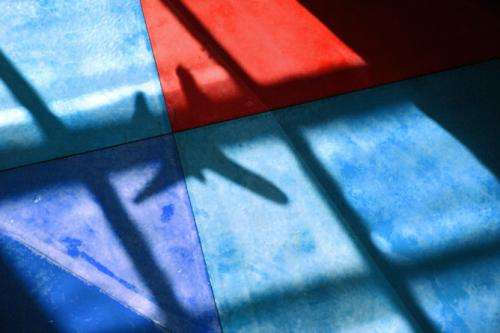MH370 should make us rethink how we monitor planes

Search ships may be honing in on the black box from missing Malaysian Airlines Flight MH370 after weeks of searching. But whether they are successful or not, the difficulty they have encountered along the way should have us seriously considering how we monitor our aeroplanes.
To prevent another MH370 from happening, tracking and control systems must change. We need closer monitoring and more tamper-proof designs.
How it works now
At the centre of speculation about what happened to MH370 is the suggestion that its Aircraft Communications Addressing and Reporting System (ACARS) and secondary surveillance transponder appear to have been switched off or disabled.
Normally, ACARS reports back every 30 minutes about the condition of an aircraft's systems. These reports go via a service provider back to the airline operations and manufacturers of major systems such as the engines. The secondary surveillance radar on board each aircraft also reports the identity, position and height when interrogated or "pinged" by ground-based air traffic control systems. MH370 also carried an ADS-B, an automatic dependency system that broadcasts location information via radio frequency, was also deactivated.
Flight crews on long-haul commercial flights over oceans or desolate and remote land mass report their position using either high-frequency radio or using satellite communications.
Reports to the relevant air traffic control are made every 45 minutes or so or when a way point is reached. Integrated satellite navigation and on-board inertial navigation systems (INS) provide accurate position information – certainly within ten metres of the true position.
It is likely that the integrated INS aboard MH370 was functioning and being used to navigate the aircraft. Whoever was flying the aircraft was either unable to report its position using satellite communications or chose not to.
Who is in control?
ADS-B broadcasts an aircraft's identity, height, position and velocity to all other nearby aircraft, to avoid collision, and to air traffic control. The introduction of this technology means that planes no longer need to rely on primary radars and archaic voice reporting every 45 minutes from remote positions.
The US requires the majority of the aircraft within its control to be fitted with ADS-B by 2020 and the EU requires existing aircraft heavier than 5,700 kilograms to be fitted by 2017 (and to new aircraft by 2015). Other regions of the world appear to be following the US schedule too.
But in the case of MH370, the ADS-B was switched off. It may now be worth considering making sure this can't happen in the future. The International Civil Aviation Organisation and the International Air Transport Association should consider isolating ADS-B and ACARS so the crew can't be disabled from the plane or at least ensure that the equipment will revert to an emergency mode if this is attempted.
Flight-deck personnel have repeatedly argued they must have control of the equipment in case of fire or electrical problems and to some extent these arguments are valid. But electronic equipment and electrical circuits can be designed to work in a safe mode using protected electrical supplies and equipment contained within sealed container surrounded by an inert gas.
Alternatively, slimmed-down instruments could be developed to send essential information if the main equipment is tampered with. The major international airline authorities should now consider the safety and well-being of passengers in order to restore trust in airlines and possibly flight deck crews. The cost of equipment modifications should be weighed against the benefits associated with trust and safety.
As a more immediate step, it's time we acted on a recommendation made in the wake of the 2009 Air France crash. This was for satellite registration to be increased from once and hour to every 15 minutes so that more accurate location information about planes can be maintained.
Better black boxes
The search for MH370's black box has brought our attention to the limitations of these devices too. If this latest information turns out to be a red herring, the chances of it ever being located diminish daily.
A submerged black box using an ultra-sonic signal at 37.5 kHz generated from its underwater location beacon has a range of around one to three kilometres, but importantly its battery will only last for 30 days. It may be time to consider developing a remote black box that continually transmits flight data to a trusted service provider.
If we are moving towards and "open skies" policy in which planes may no longer be required to fly rigid air corridors over oceans, a redesign is particularly pressing. In this new design, flight deck crews should have no control over communications. As a short-term action the battery life should be increased to at least 100 days.
It will be up the International Telecommunications Union's standardisation bureau to work with avionics and aircraft manufacturers, satellite operators and airline companies to develop new standards to track aircraft in real time. But it is likely to come up against opposition from the aviation industry, which is notoriously conservative.
That might suggest that national governments need to get involved to push for urgent change. Otherwise, it could take years before we can really reduce the chances of a disaster like MH370 from happening again.
Provided by The Conversation
This story is published courtesy of The Conversation (under Creative Commons-Attribution/No derivatives).
![]()




















